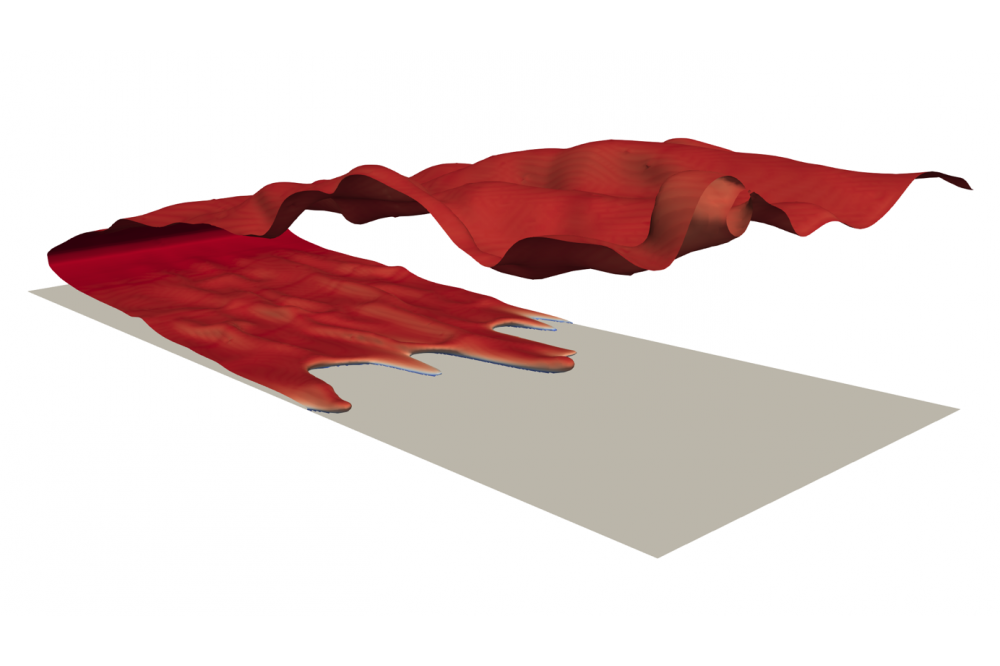Direct Numerical Simulation of Flame-Wall-Interactions of DME Flames
Einleitung
In the context of global warming, the necessity of efficient and low emission combustion applications arises. The current tendency in technology is towards smaller internal combustion engines, that enable higher pressure ratios and, therefore, reach higher efficiencies. However, this evolution increases the surface to volume ratio that leads to a growing influence of near wall phenomena on the overall combustion process. Additionally, for the transformation to a CO2-neutral energy system, finding replacements for fossil fuels is essential. These alternative fuels are produced from biomass or by using H2 from renewable electricity and CO2 from the atmosphere, and thereby allow for a CO2-neutral combustion process. Dimethyl ether (DME) is a promising low-emission and environmentally friendly alternative to diesel and possesses the potential to become an important fuel in the future. The interaction of the flame with the surrounding walls has a crucial influence on the overall efficiency. Due to heat-losses at the cold walls, the chemical reactions within the flame may stagnate. This leads to incomplete combustion in close vicinity to the walls, which has a major impact on pollutant formation. To develop new features for the optimization of geometries and operating conditions in modern, low emission internal combustion engines, the understanding of the underlying processes of the chemical reacting near wall flow is essential. Furthermore, for more complex flame configurations, like flame-wall interactions, DME can serve as a starting point for systematic studies of more complex oxygenated fuels. In this project, a Direct Numerical Simulation (DNS) of the flame wall interaction of a dimethyl ether (DME) flame will be performed. Results from the DNS will provide detailed insight into the underlying physics of near wall combustion and pollutant formation. The results will also serve as a database for validation of novel strategies for tabulated chemistry approaches in Large Eddy Simulations (LES) of near wall combustion. The development and validation of a tabulation strategy able to capture the effects of differential diffusion - omitting the common restriction of a unity Lewis number assumption- pose a fundamental step in making LES of combustion processes of alternative fuels (e.g. DME, Hydrogen or Hydrogen-Blends) feasible in complex geometries.
Methoden
Simulations are carried out using the robust cell-centred finite-volume framework in the open source toolbox OpenFOAM and two custom numerical solvers. For the Direct Numerical Simulation with detailed chemistry and mixture averaged diffusion, a solver developed at the Engler-Bunte-Institute of Karlsruher Institute of Technology will be used. This solver makes use of a coupling to Cantera, the Sundials library and operator splitting to efficiently solve the computationally demanding part of detailed chemistry. In the LES tabulated chemistry will be used in combination with the artificial thickened flame model for closure of turbulence-chemistry-interaction. For the LES a custom solver developed by STFS at TU Darmstadt will be used.




